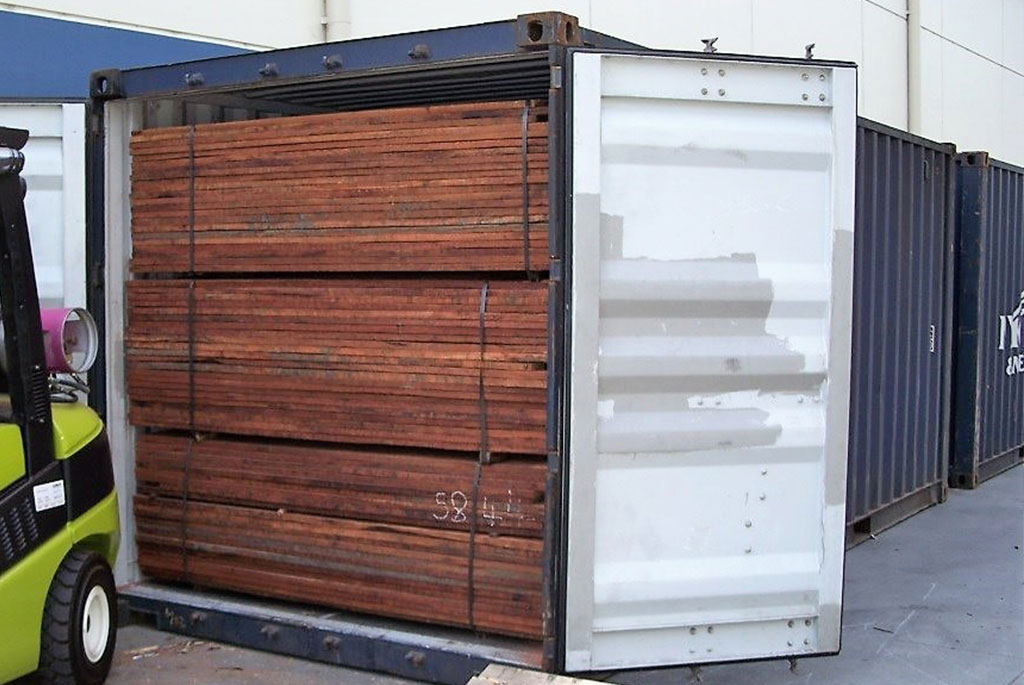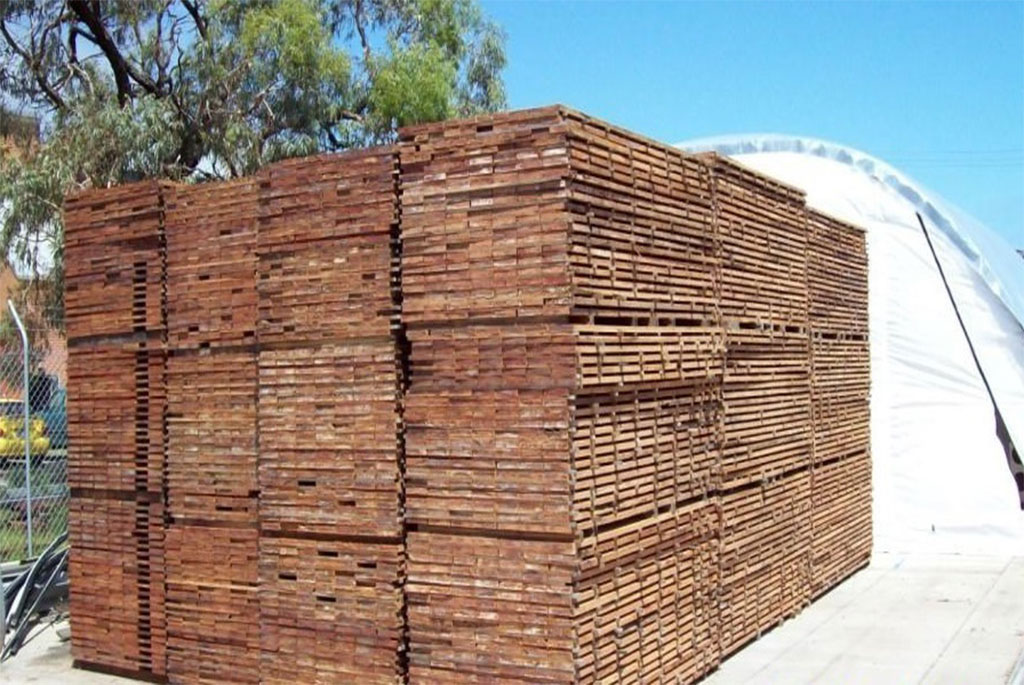Superior Outcomes- Higher Profits!
High quality redgum flooring stock is produced using Solarkilns cyclic drying technology from low quality 25-30 cm logs.
River Redgum (E.Camaldulensis) is one of the densest commercial species to be dried for high value products such as flooring and furniture. Camaldulensis is another specie that is regarded by many as “difficult”to dry even when sourced from mature native forests and virtually uneconomic from young plantation wood- simply because it cannot be dried without high levels of stress related waste.
A Melbourne based company now uses Solarola technology to dry mixed grade green sawn timber from small diameter regrowth logs that he would have otherwise had no practical use for this resource. The material includes heartwood and highly defective timber that traditional redgum millers would not even contemplate drying.
Solely due to the superior stress relief of cyclic drying, Solarkilns routinely enjoys unparalleled quality and yield outcomes due to reduced collapse, splits, checks and degrade compared to other producers.
It is common practice for the Australian Industry to reject or chip low grade heartwood before drying. This timber is typically sold as low value pallet or garden timber simply because it is inherently impossible to produce useable dry sawn stock for value-added kiln dry products without degrade losses of 80-90% of original volume.
Solarkilns’ technical advisor, Hon Professor Gary Waugh recently stated that “Solarkilns regularly achieves less than 3-5% down-grade, producing highly sought after figured flooring products worth $2400 per cubic metre compared to $100 per cubic metre for woodchips”.
Heartwood accounts for approximately 30% of the sawn timber from small plantation and re-growth logs. Solarkilns’ comparative value difference due to being able to successfully dry heartwood alone equates to over $400 per cubic metre of timber dried under current market conditions. Low cost solar drying allows the entire process to be conducted under kiln controlled conditions, often at lower cost than the final stage of the common two-stage
practice of air seasoning followed by final drying using expensive conventional drying kilns.
Superior Outcomes- Higher Profits! High quality redgum flooring stock using Solarkilns cyclic technology from low quality 25-30 cm logs Drying from green to finished products in 50 days is well and truly justified by sheer value outcomes alone. It is no longer a viable proposition to air season for 6-12 months then finish off in a conventional kiln at higher cost and with high levels of degrade.
A further competitive advantage enjoyed by this operation lies in the fact that controlled cyclic drying minimizes collapse. The subsequent need to apply steam reconditioning during the drying process is eliminated. This saves handling, energy and process time costs typically associated with alternative drying methods. Inspection of this superior operation in outer-Melbourne, Australia is possible to approved visitors.
The sawmiller that dries the above material saved $20,000 on his kiln purchase price by purchasing a cheap and poorly controlled variety of conventional kiln. This saves to around $1/ M3 on his unit capital costs. He suffers massive penalties of 15-20% loss of volume in splits, consumes over 80% more costly energy, adds to his final trimming and processing costs, and devalues his timber quality markedly due to fine checks and twist.
In simple terms, he saves $1/ M3 in his kiln outlay, adds $60 in energy costs, loses equivalent of $250/M3 in sales volume and a further $350 in average selling price (product value). As every year passes, the cost difference increases.
Young kiln dried redgum using Solarkilns technology- Melbourne 2008
This manufacturing operation routinely uses Solarkilns technology to dry run of log material including heartwood that comprises up to 25% of its production.
- End split losses less than 1% of total volume (cf 20%)
- Little or no preparation before dressing or sales (-$35/M3)
- Value Difference; high select grade proportion vs low grade products(+30%)
- Energy input saving (-$60/M3)
Based on only 500 M3 of production annually from one small kiln, the value difference and savings equate to over $350,000 AUD per year on today’s prices. Did the $20,000 saving on the cost of the single cheap kiln unit save money?



